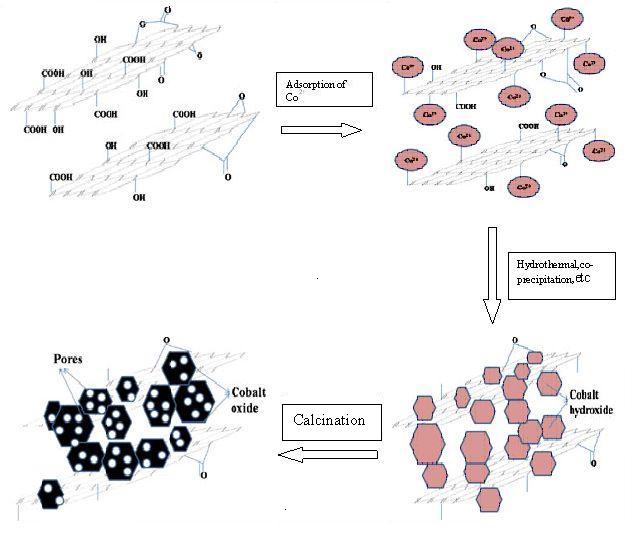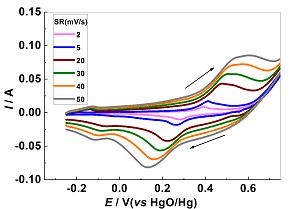Chemical synthesis of the mesoporous Co3O4 based spinel oxide/graphene composite and its application in supercapacitors
Supercapacitors (also called electrochemical capacitors) provide high power density, fast charge-discharge and long lifetime, and may serve as energy storage devices complementary to batteries. Supercapacitors are generally classified into electrical double-layer capacitors (EDLC) and pseudocapacitors. Recently, graphene has emerged as a promising candidate for EDLC capacitors due to its extremely high specific surface area, excellent electronic conductivity, outstanding intrinsic mechanical strength, reasonable chemical stability and superior thermal conductivity. But the energy density of graphene-based capacitors still cannot meet current needs. Therefore, an efficient strategy to achieve high energy density without sacrificing the power density is to develop the composite materials that combine high conductivity of carbon materials with high specific pseudocapacitance of metal oxides since pseudocapacitors store and deliver energy through redox reactions, leading to high specific capacitance. As a typical metal oxide electrode material, RuO2 has a high capacitance, reversible charge/discharge features, and good electrical conductivity, all of which place it in the focus of research and development of supercapacitors having the potential to achieve higher energy and power densities. Unfortunately, its high cost renders this material unsuitable for commercialized in many applications.
Transition metal oxides, such as MnO2, Co3O4 and NiO possess multiple oxidation states or structures that enable rich redox reactions for pseudocapacitance, have been investigated as alternative materials for RuO2 in next-generation supercapacitors. Transition metal oxides alone offer high specific capacitance, but they deliver low power density and poor rate capability. Thus, studies of the synthesis of 1D-3D controllable micromorphology of the transition metal oxides mesoporous and their composite with nano actived carbon (ex. graphene, NCT, etc) on molecular level have achieved some progress. But the electrochemical performance of the mesoporous transition metal oxides or its composite with nano-activated carbon is still not ideal (low specific capacitance much lower than theoretical values, poor electron exchange reversibility and high electrical conductivity of electrode material).
The present project will attempt to resolve these problems of mesoporous transition metal oxide-based supercapacitors.
We will conduct studies of mesoporous Co3O4 oxides as follows: We will focus on developing of assembly methods on a molecular level for mesoporous Co3O4 oxides with graphene.
 |
Secondly, Co3O4 is an example of an important p-type semiconductor with direct optical band gaps at 1.48 and 2.19 eV. The doping with other transition metal oxides or cations can enhance the electrochemical performance of Co3O4 by improving the active site density, conductivity, and roughness. Thus, the electrochemical performance of the Co3O4 oxide-based supercapacitor can be enhanced.
 |
CV curves of the Ni/NiCo2O4 porous coating electrode
Selected Publications
1. Bao Jin-Zhen and Wang Sen-Lin: Preparation of the Ni/NiCo2O4 composite electrode and its properties toward the oxygen evolution reaction in alkaline media,Acta Phys. Chim. Sin.,2011,27(12):2849-2856.
2. Bao Jin-Zhen and Wang Sen-Lin: Preparation of the Ni/NiCo2O4 composite electrode used on the oxygen evolution reaction in alkaline media. Chinese patent No201210048484.8.
3. Wang Sen-Lin,Wang Li-pin,Zhang zheng-Hong: The Ni/NiCo2O4 porous coating electrode preparation and its electrocatalytic performance towards OER. Acta Phys. Chim. Sin.,submitted.
4. Wang Lipin, Wang Senlin, Duan Qianhua. The Ni/NiFe2O4 Electrode prepared by composite electro-deposition and its electro-catalytic performance towards oxygen evolution reaction. Chinese Journal of Applied Chemistry, accepted.
